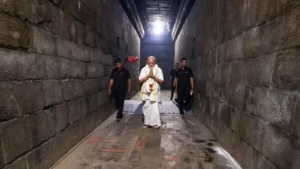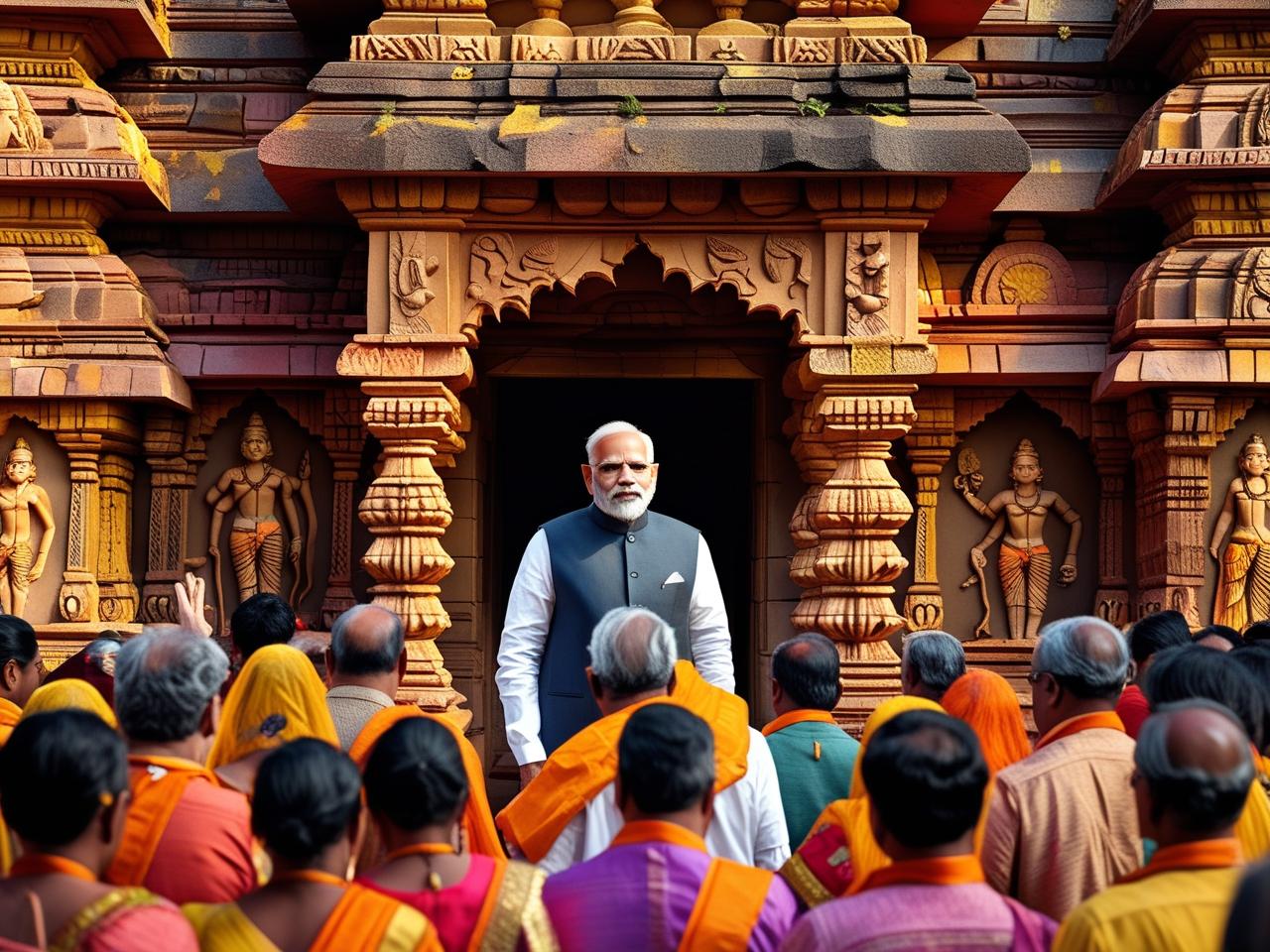🏛️ 1. The History Behind Gangaikonda Cholapuram
Gangaikonda Cholapuram, constructed in the 11th century by Rajendra Chola I, stands as a monumental symbol of Tamil heritage and Chola architectural brilliance. Built to commemorate his successful expedition to the Ganges, the temple echoes the grandeur of the Chola Empire. Like its counterpart in Thanjavur, this Shiva temple reflects the peak of South Indian temple design and continues to inspire cultural pride.
🕉️ 2. Aadi Thiruvathirai and PM Modi’s Temple Visit
PM Modi visited the temple on the occasion of Aadi Thiruvathirai, a day sacred to Lord Shiva’s cosmic dance form—Nataraja. His timing was deeply symbolic, aligning with Tamil cultural traditions and emphasizing the shared civilizational ethos between Tamil Nadu and the rest of India. The Prime Minister participated in the rituals and was seen paying deep respect to the temple’s history.
🗿 3. Honouring the Chola Legacy with New Statues
During his address, PM Modi emphasized the enduring legacy of Chola kings, stating that names like Rajaraja Chola and Rajendra Chola I are not just part of Tamil history, but a proud chapter in India’s identity. He also announced the government’s plan to erect majestic statues in Tamil Nadu to honor these great emperors—an initiative aimed at recognizing their contribution to Indian culture and history on a national scale.
🧭 4. The Political Undertone
While officially a cultural visit, many interpret the Prime Minister’s temple stop as a broader political gesture. Tamil Nadu has remained a challenging region for the BJP politically. This visit, celebrating Tamil pride and historical legacy, is seen as part of the party’s long-term cultural outreach—blending reverence for regional history with a message of national unity.

